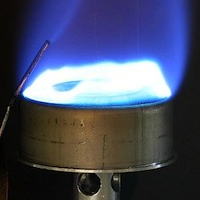A number of recent stove models feature a pressure regulator in place of a needle valve, and the marketing spin and claims for the virtues of the pressure regulator border on the absurd. In Part 1 of this series we examined the claims and debunked them using basic physics and some testing. Despite this, some manufacturers and some users claim improved performance in the cold for their particular stove, relative to a 'conventional upright stove'. We believe some of this improvement is possible, so in this Part 2 we examine just what is going on here in both upright and remote canister stoves. Needless to say, it has nothing to do with the pressure regulator.
We will start with some history about stove design and different fuels, because looking at that sheds a lot of light on why many stoves have been made the way they are. We will especially look at remote canister stoves and other liquid fuel stoves, because they shed a lot of light on this. We will also look at recent developments in stove design, with a lot of data coming from experimental work done over the last few years by the author. Then we will put it all together and offer a suggestion as to what is really happening, and how better stoves could be made in the future.
ARTICLE OUTLINE
- Introduction
- Technical History
- Kerosene
- Petrol or White Gas
- Propane and Butane
- The Big Difference between Fuels
- Conventional Winter Remote Canister Stoves
- Second Generation Remote Canister Stoves
- Epiphany
- Upright Canister Stoves for Winter Use?
# WORDS: 3860
# PHOTOS: 8
Member Exclusive
A Premium or Unlimited Membership* is required to view the rest of this article.
* A Basic Membership is required to view Member Q&A events




Home › Forums › Thermal Feedback in Upright Canister Stoves